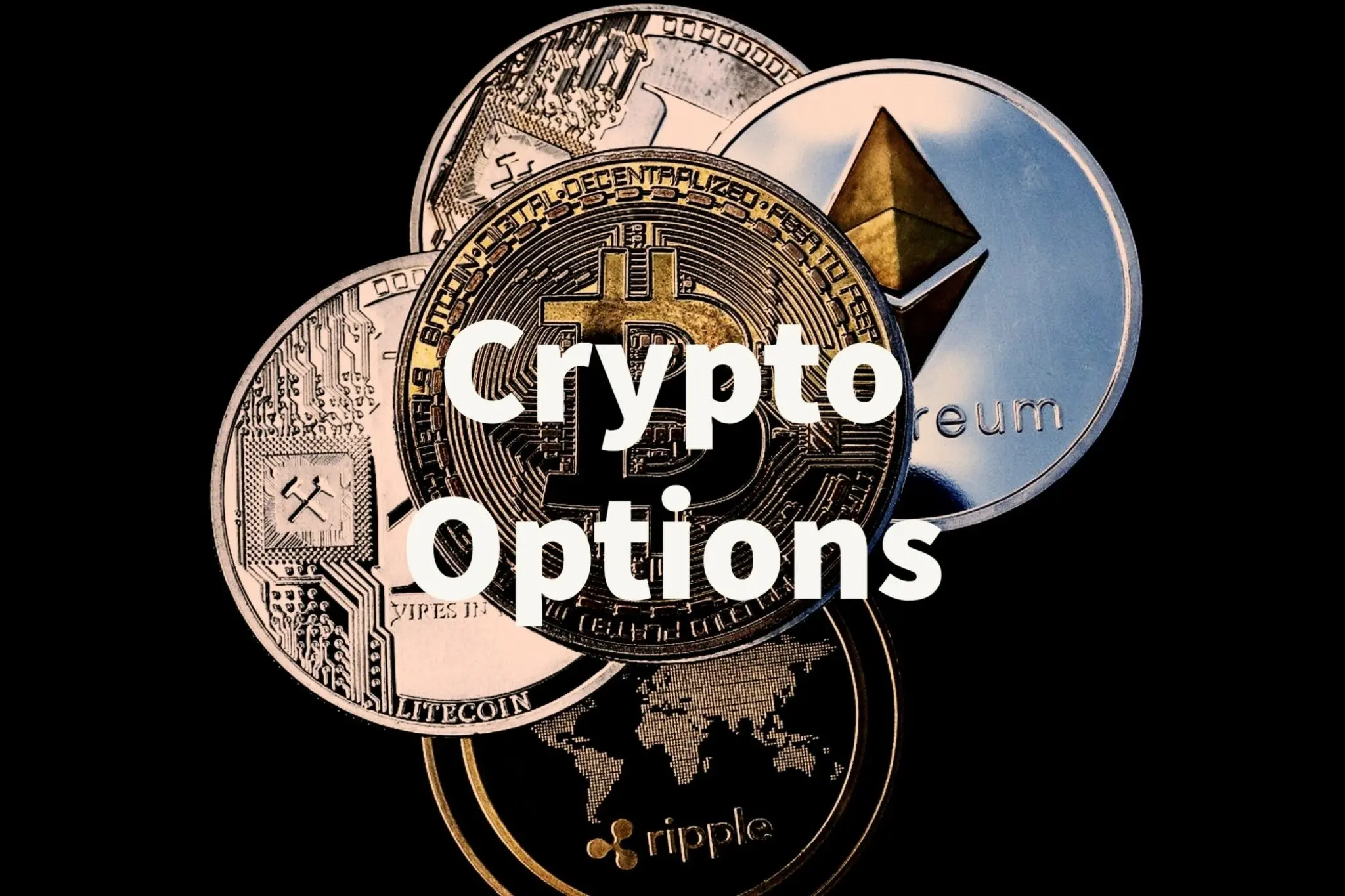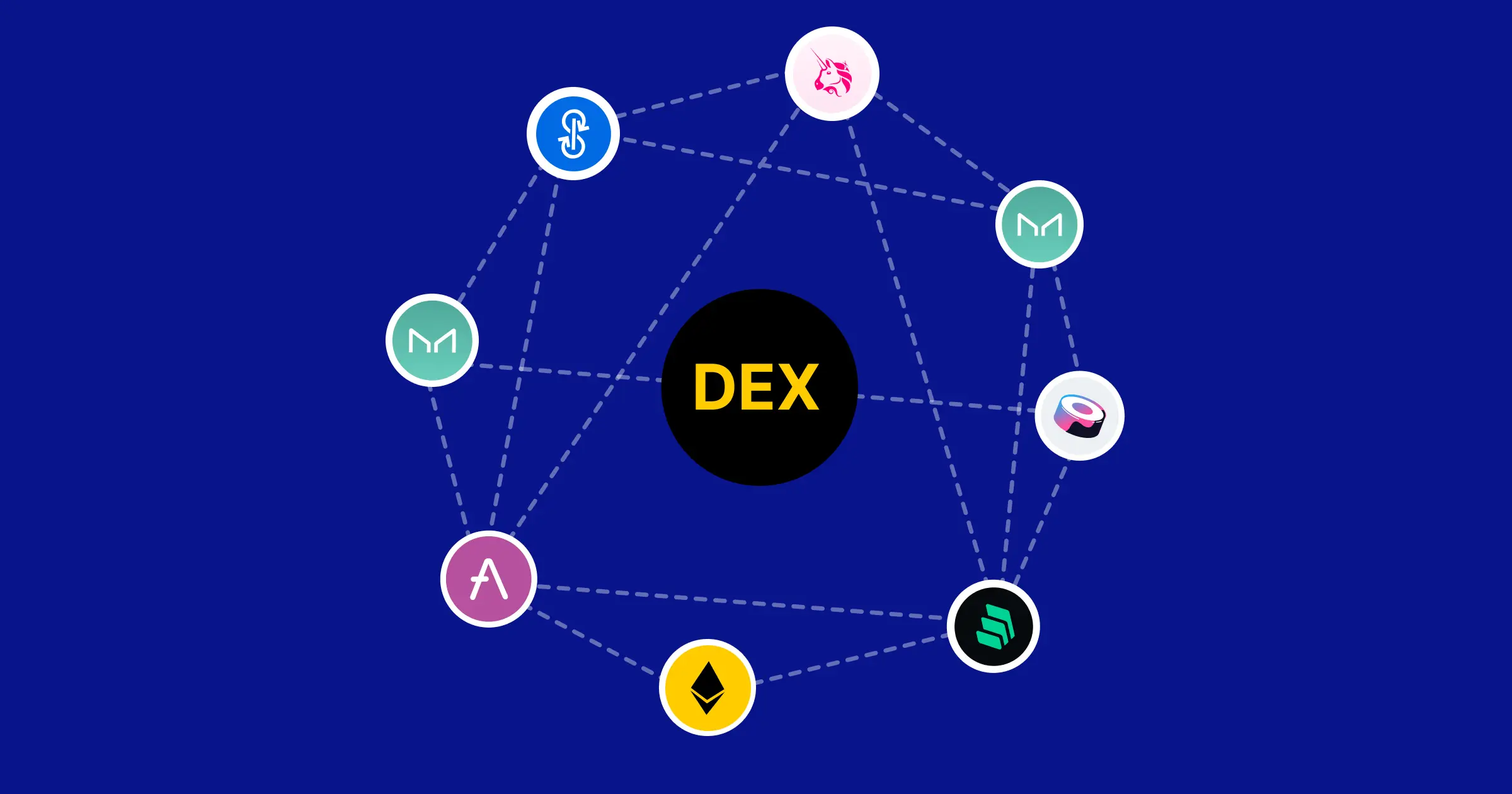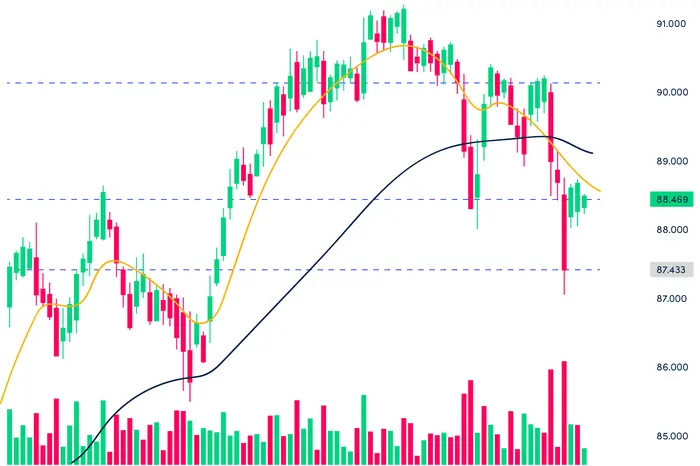Exploring the world of cryptocurrencies can be intriguing. This is especially true with the rise of decentralized exchanges (DEX) offering options trading. You have a chance to dive into platforms that provide trading without a central authority. They merge the benefits of decentralized finance with the flexibility of options trading. This blend aims to offer security, variety, and more personalized trading experiences.
These decentralized options platforms are part of the growing DeFi ecosystem. By removing middlemen, they strive to offer improved transparency and control over your trades. You may encounter popular layer-one and layer-two networks like Arbitrum, Avalanche, and Ethereum. These networks often host these exchanges.
As you explore DEX for options trading, you’ll find a space that’s rapidly evolving, filled with opportunities and innovations. Secure transactions and versatile trading choices await, offering a glimpse into the future of finance.
Understanding Crypto Options

Crypto options give you rights, not obligations, to buy or sell assets. They suit risk management and speculating on price movements. You’ll explore definitions, types, and important terms in this section.
Definition and Fundamentals
Crypto options are financial contracts. They allow you to buy or sell assets like Bitcoin at a fixed price. What makes them unique is that you have a choice. You can decide whether to trade the asset or not by a specific date. This feature is useful for managing risk or taking advantage of price changes.
Two main types exist: call options and put options. Call options give you the right to buy, while put options allow you to sell. By choosing the right type, you gain flexibility in trading strategies.
These options are part of the DeFi ecosystem, operating on decentralized exchanges (DEXs). DEXs provide platforms for peer-to-peer trading, enhancing accessibility. This decentralization reduces reliance on middlemen and offers greater control over your trades.
Types of Crypto Options
Crypto options come in various forms, with European and American options being the most common. European options can only be exercised on their expiration date. In contrast, American options offer more flexibility, allowing exercise at any time before expiration.
Beyond these traditional types, you may encounter exotic options. These options have unique features and conditions, like Asian or Barrier options. Each type caters to different needs and market strategies, offering you a range of trading possibilities.
Understanding the differences is vital. It helps you choose the best option based on your market outlook and risk tolerance. The choice between these types affects your potential profits and losses, as well as the flexibility of your trading plans.
Options Trading Terminology
To navigate crypto options, you need to know key terms. Premium is the price you pay for the option itself. It’s like a fee, giving you the right but not the obligation to trade. Strike price is the price at which you can buy or sell the asset.
Expiration date is a crucial aspect, as it’s the deadline for your decisions. If you don’t act by then, the option expires worthless.
Implied volatility measures expected price swings and impacts option pricing. Higher volatility often means more expensive options. Familiarity with these terms equips you to make informed decisions, optimizing your trading strategies.
The Role of Decentralized Exchanges (DEX)

Decentralized exchanges (DEXs) play a crucial role in crypto trading by allowing peer-to-peer transactions without a central authority. They offer unique advantages compared to traditional exchanges, mainly regarding control and privacy. Liquidity is another vital factor that ensures effective trading on DEXs.
DEX vs Traditional Exchanges
When you use a DEX, you control your funds directly. There’s no need for an intermediary, unlike traditional exchanges where your assets are held in a centralized wallet. Security is a key benefit of DEXs, as your private keys remain with you, reducing the risk of hacking or fraud. Many users appreciate the increased privacy that DEXs provide.
Traditional exchanges, on the other hand, often offer better user experiences with more tools for advanced trading. They may also provide quicker transactions. However, they can be more vulnerable to server failures and regulatory issues. For security, control, and privacy, DEXs have meaningful advantages. Yet, for ease of access and features, traditional exchanges can be more beneficial.
Importance of Liquidity in DEXs
Liquidity refers to how easily assets can be bought or sold without affecting their price. It is vital in DEXs to ensure smooth transactions. High liquidity means there are plenty of buyers and sellers, making trading efficient and stable.
Liquidity pools are a common solution in DEXs. They allow users to provide their own assets in exchange for rewards. This boosts liquidity and minimizes price slippage during trades.
Without adequate liquidity, you might face delays or poor exchange rates. DEXs that focus on improving liquidity create more effective and user-friendly platforms for crypto enthusiasts like you, encouraging more active participation in the ecosystem.
Using Crypto Options on a DEX
When you use a decentralized exchange (DEX) for trading crypto options, several key steps are involved. You need to set up a compatible wallet, grasp how smart contracts work, and execute trades correctly.
Setting Up a Wallet
To start using crypto options on a DEX, you must have a wallet that supports cryptocurrencies. Metamask and Trust Wallet are popular choices. Ensure your wallet is connected to the Ethereum network or any other relevant blockchain.
Your wallet acts as your gateway to the world of decentralized finance. It stores your keys and allows you to sign transactions without the need for a centralized intermediary. Securing your wallet with a strong password and enabling two-factor authentication (if available) are crucial steps.
Fund your wallet with a small amount of cryptocurrency, like Ethereum, to pay for transaction fees. You may also need the specific token that you wish to trade in option form.
Understanding Smart Contracts
Smart contracts play a vital role in DEX trading. They facilitate, verify, and enforce the negotiation or performance of a contract without human intervention. When you trade options on a DEX, smart contracts ensure the automatic execution of trades when certain conditions are met.
These contracts are programmed on blockchain networks like Ethereum. Transparency and immutability are key features of smart contracts, meaning once set, they cannot be altered easily. This provides a higher degree of trust and security in your trades.
Familiarize yourself with the basic terms and conditions included in these contracts, such as strike prices and expiration dates. Knowing how smart contracts function can help you trade more efficiently and reduce risks.
Executing Trades
Executing trades on a DEX involves interacting directly with the smart contracts. First, select the crypto option you wish to trade, keeping an eye on details like expiration date and strike price.
When ready, enter the amount you want to buy or sell. Confirm the transaction through your wallet. This requires signing the transaction and paying any applicable gas fees to process it on the blockchain.
Keep in mind that DEXs operate 24/7 and offer less slippage compared to centralized platforms. However, always monitor network congestion which can affect transaction times and costs. Employing limit orders can help you mitigate risks associated with price volatility.
Key Players in the DEX Options Space
In the world of decentralized exchanges (DEX), various platforms have emerged, making it easier for you to trade cryptocurrency options. Some focus on Ethereum’s robust infrastructure, while others leverage new and emerging blockchain technologies.
Ethereum-based DEX Options Platforms
Ethereum serves as a powerful foundation for several DEX options platforms. Opyn, known for its user-friendly interface, has gained attention for offering a range of options contracts on Ethereum. The platform supports both buying and selling, giving you the flexibility to manage your crypto portfolio effectively.
Another important platform is Hegic, which provides a decentralized options trading experience. It offers a liquidity pool, allowing option writers to earn fees while traders take positions. This makes it appealing if you are interested in both trading and liquidity provision. The strength of Ethereum’s infrastructure enhances security and scalability for these platforms, making them popular choices for traders like you.
Emerging Blockchain Options Platforms
As blockchain technology evolves, new platforms are entering the DEX options scene. Injective Protocol stands out by offering tendermint-based options trading, which offers high performance and scalability.
Siren Protocol is another interesting choice. It focuses on creating a seamless trading experience by using the Layer 2 solution for faster transactions and reduced costs. This makes it an appealing option if you are looking to trade without hefty fees. By taking advantage of these newer blockchains, these platforms provide you with innovative opportunities in the growing world of decentralized finance (DeFi).
Risk Management in Crypto Options

Managing risks in crypto options involves understanding potential pitfalls and using strategies to minimize them. This helps you protect your investments and make informed decisions.
Assessing Risks
In crypto options, you face various risks. Volatility is a major factor, as crypto prices change rapidly. This means your investments could quickly lose value.
Another risk is liquidity. In some cases, it might be difficult to sell your options without a significant price impact.
Market manipulation is also a concern. Large players might influence prices, affecting your trades negatively.
You should also consider regulatory risks. Changes in laws could impact your ability to trade or impact the value of your holdings.
By analyzing these risks, you can better prepare and decide how much capital you’re willing to risk.
Hedging Strategies
Using hedging strategies can help protect your portfolio from unexpected losses. Options buying is one way. You can purchase call or put options to limit potential losses on a position.
Another method is spreading. This involves holding more than one position at the same time, balancing potential profits and losses.
Diversifying your investments across different cryptos can reduce risks tied to any single asset. This approach shields you from significant losses if one asset performs poorly.
Effective hedging requires careful planning. Being aware of various strategies allows you to tailor them to fit your risk tolerance and market outlook.
The Impact of Volatility on Crypto Options
Volatility plays a crucial role in crypto options trading. It affects your strategy and potential returns significantly. Understanding how to measure and navigate it is essential to maximize profits in a volatile market.
Measuring Volatility
Volatility is a measure of how much and how quickly the price of an asset, such as cryptocurrency, moves. Implied volatility is often used in options pricing to predict future price swings. You may encounter a “volatility smile,” a graph illustrating implied volatility across different option strike prices, showing higher volatility at extreme prices.
To assess volatility, you can use metrics like historical volatility, which looks at past price movements. Tracking these changes helps you anticipate possible shifts in the market and make better-informed decisions when trading options.
Strategies for Volatile Markets
When markets are volatile, you can adopt specific strategies to manage risk effectively. One approach is the straddle strategy, involving buying both a call and a put option with the same strike price and expiration. This helps you profit from large price movements in either direction.
Alternatively, you might consider a collar strategy, combining protective puts and covered calls. This limits potential gains but reduces losses in a volatile market. Staying informed about market trends and using these strategies can help you manage your risks and potentially enhance your returns in the often unpredictable crypto options market.
Regulatory Environment
The regulatory landscape for crypto options on decentralized exchanges (DEXs) is complex, evolving, and influenced by global standards. Users must consider how regulations impact their access and obligations when using these platforms.
Current Regulatory Landscape
Regulations for crypto options on DEXs vary widely. Many governments are still developing policies, aiming to balance innovation with consumer protection. In some regions, there are stringent know-your-customer (KYC) and anti-money laundering (AML) requirements that apply to all financial transactions.
The decentralized nature of DEXs presents unique challenges. While centralized exchanges often work with local regulators, DEXs must navigate global regulations. Authorities may focus on areas like user privacy, tax compliance, and risk management in decentralized environments. They aim to prevent illegal activities without stifling technological progress.
Considerations for DEX Users
If you’re using DEXs, it’s essential to be aware of the regulatory requirements that might impact you. KYC and AML policies are critical areas of focus. Some platforms might require identity verification to ensure compliance. Check the specific requirements of each DEX to know what is necessary to engage with them legally.
Understand the tax implications of trading on DEXs as well. Make sure you stay informed about reporting obligations for your transactions. Adhering to these rules is crucial to avoid potential legal issues. Keep up-to-date with any regulatory changes to ensure your trading activities remain compliant.
Technical Analysis for Options Trading

Having a solid grasp of chart patterns and an understanding of indicators and oscillators is crucial in the realm of technical analysis. These tools help you anticipate market movements, aiding in making informed trading decisions in options trading.
Chart Patterns
Chart patterns offer a visual way to predict price movements. Head and shoulders, double tops, and flags are common patterns. With a head and shoulders pattern, a reversal is often anticipated. Double tops suggest a potential drop after an uptrend.
Flags point to a brief pause before the price continues in its previous direction. Recognizing these can help you spot potential entry and exit points. By studying historical prices, you can better position yourself in the market, improving your trading strategy.
Indicators and Oscillators
Indicators, like moving averages and MACD, help identify trends and potential reversals. Moving averages smooth out price data, making trends easier to spot. They can show you not just the direction of a trend but its strength.
Oscillators, such as RSI or Stochastic, give insights into overbought or oversold conditions. An RSI above 70 might suggest a sell opportunity, while below 30 could signal a buy. Combining these tools with other analysis methods can enhance your understanding of market conditions, helping you make more accurate trades.
Liquidity Pools and Options Trading
Liquidity pools are vital in decentralized exchanges (DEXs). They facilitate options trading by providing liquidity for various assets.
Understanding how these pools work and your role in contributing to them can enhance your options trading experience.
Understanding Liquidity Pools
Liquidity pools are collections of tokens locked in a smart contract. These pools enable seamless trading of assets without relying on traditional order books.
In the context of options trading, they allow you to find buyers and sellers easily.
Each pool consists of two tokens, forming a trading pair. Users, known as liquidity providers, supply equal parts of each token to the pool.
As trading occurs, the pool’s composition changes, maintaining price stability. Fees generated from trades are shared among providers, making liquidity pools an attractive option for passive income.
When you trade options on a DEX, these pools ensure smooth and efficient transactions. They provide the necessary liquidity for executing trades, minimizing slippage, and reducing transaction costs.
By participating in these pools, you play a part in the decentralized finance (DeFi) ecosystem, supporting its growth and success.
Contributing to Liquidity Pools
Contributing to liquidity pools involves depositing an equal value of two distinct tokens into a pool. In return, you receive pool tokens, which represent your share of the pool and your entitlement to a portion of the trading fees.
To get started, choose a platform like Uniswap or SushiSwap that supports options trading.
Once you’ve selected a DEX, connect your crypto wallet and navigate to the liquidity pool section.
Decide on a token pair and deposit them in equal parts. Regularly monitor the pool, as you may need to rebalance your assets if the pool becomes unbalanced due to fluctuating market prices.
By contributing to liquidity pools, you not only earn fees but also help maintain a robust market for options trading. This active involvement ensures that options trading remains efficient, reliable, and accessible to all market participants.
Innovation in DEX Options Trading
Decentralized exchanges (DEXs) have transformed options trading with new tools and technologies. These innovations improve trading efficiency and address existing challenges like scalability and trading flexibility.
Automated Market Makers (AMMs)
Automated Market Makers (AMMs) are a key innovation in DEX options trading. Instead of using traditional order books, AMMs rely on smart contracts to manage liquidity pools.
These pools allow you to trade options without needing a direct counterparty. This increases liquidity and reduces the waiting time for trades. You may also see greater price stability thanks to these pools.
AMMs enable efficient and quicker trades. This means you can enter or exit positions with ease.
They simplify the trading experience by automatically calculating trade prices based on available pool liquidity. This system has brought a more seamless trading experience to users.
Layer 2 Solutions and Scalability
Scalability is essential for DEX options trading, and Layer 2 solutions play an important role. These solutions work on top of existing blockchains to speed up transactions and reduce costs.
They help address network congestion by processing many transactions off-chain.
By using Layer 2 solutions, you can enjoy faster and cheaper trades. This makes trading more appealing by minimizing fees and delays.
These solutions are crucial for supporting a growing number of traders without compromising performance. As a result, Layer 2 technologies contribute to a more efficient and user-friendly trading environment.
Frequently Asked Questions
In the world of cryptocurrency, decentralized exchanges (DEXs) offer unique opportunities for trading options. These platforms provide a peer-to-peer marketplace where you can engage in options trading without intermediaries.
What are the top decentralized exchanges offering options trading?
Some well-known DEXs for options trading include dYdX, Opyn, and Premia. Each platform is known for offering unique features. They support various cryptocurrencies and provide users with advanced tools for options trading.
How does options trading on a decentralized exchange work?
Options trading on a DEX involves using smart contracts to automatically facilitate trades. You’ll trade options directly with other users, bypassing traditional brokers.
All transactions occur on the blockchain, ensuring transparency and security.
What are the benefits of using a DEX for trading cryptocurrency options?
Using a DEX for options trading offers better security by removing central intermediaries. This means lower fees, as you are dealing directly with other traders. You also maintain greater control over your assets at all times.
Which DeFi platforms are known for their crypto options trading features?
Platforms like Hegic, SIREN, and Opyn stand out in DeFi for their options trading features. They support various option types and come with user-friendly interfaces. They cater to both beginners and experienced traders.
How safe is it to trade options on a decentralized exchange?
Trading options on a DEX is generally considered safe due to the use of blockchain technology and smart contracts. However, you should still do thorough research to understand the risks involved, such as smart contract vulnerabilities.
Can you list some decentralized exchanges that support Bitcoin options trading?
BitMEX, dYdX, and Quedex are examples of DEXs that support Bitcoin options trading. These platforms provide advanced tools and a range of options contracts. This allows you to trade Bitcoin options effectively.
